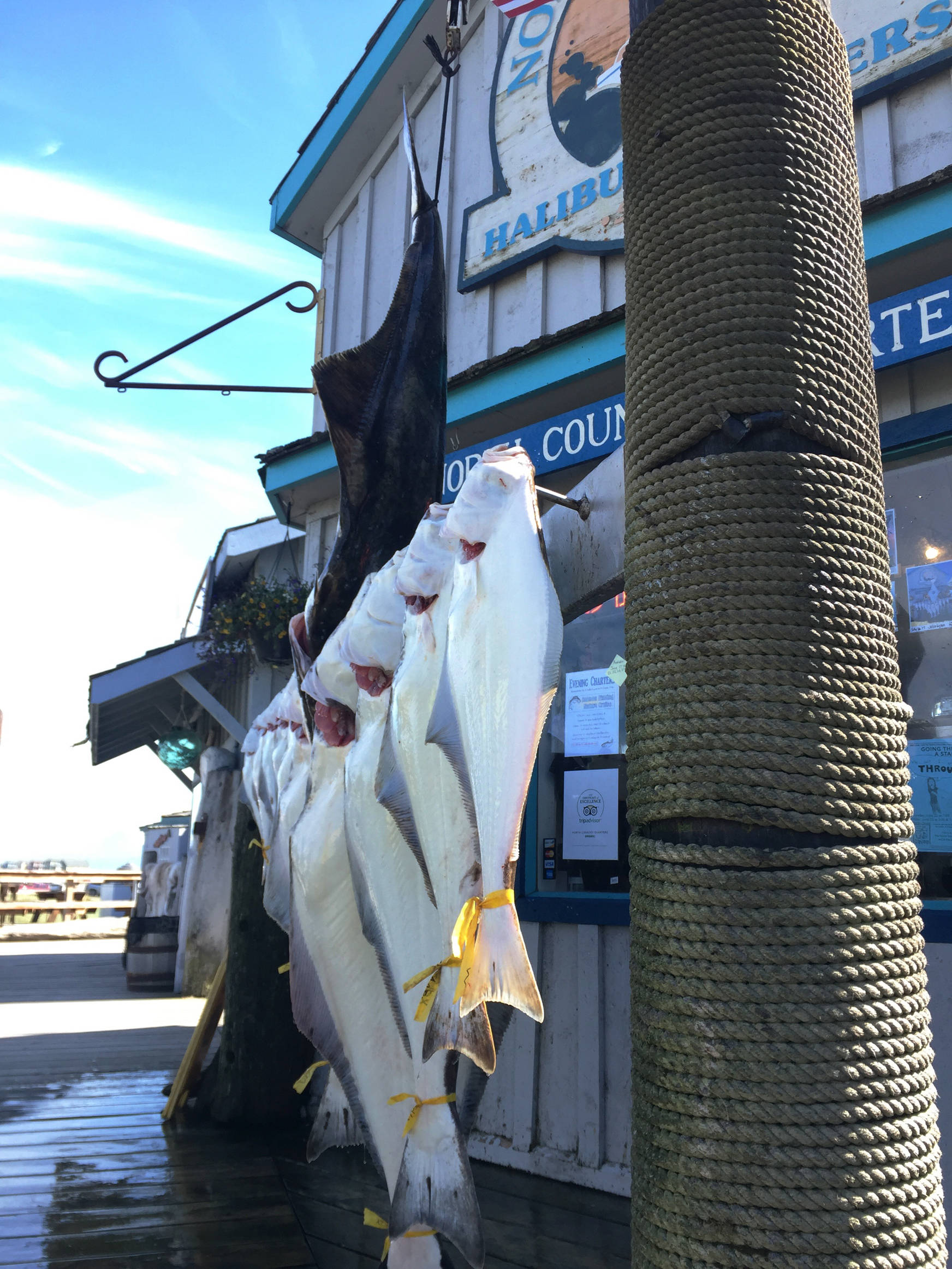Halibut fishermen may see a reduction in the total amount of fish they’re allowed to catch in 2018.
Data presented to the International Pacific Halibut Commission at its meeting in Portland in November showed low recruitment rates among young Pacific halibut populations from 2005–2016 compared with the previous decade or so. With increasing pressure on stocks among commercial, subsistence and sportfishermen, the commission may institute a recommended 24 percent drop in the annual halibut quota for fisheries throughout the Pacific from the Arctic to southern California.
In regulatory areas 3A and 2C, which cover the waters of Cook Inlet and the Gulf of Alaska between Kodiak and the southern tip of the Alaska Panhandle, fishermen of all types landed more than 20.8 million pounds of halibut in 2017, according to a report included in the International Pacific Halibut Commission meeting documents. The two areas account for nearly half of the total 42.4 million pounds brought in across all regulatory areas, according to the report. That’s up slightly from the previous year, when an estimated 41.8 million pounds of halibut were killed.
Halibut are a long-lived groundfish species that depend on a healthy numbers of spawning fish over multiple years and young fish survival to sustain a population. For various reasons, some clearer than others, the Pacific halibut population in Southcentral Alaska has begun to decline in recent years, leading to more restrictions for fishermen.
Though the total biomass of spawning females stabilized around 2010, the young halibut recruitment appears to be falling in recent years, according to a 2017 stock assessment submitted to the International Pacific Halibut Commission.
“Pacific halibut recruitment estimates show the largest recent cohorts in 1999 and 2005; cohorts from 2006 through 2013 are estimated to be smaller than any recruitment from 1999–2005,” the assessment states. “This indicates a high probability of decline in both the stock and fishery yield as recent recruitments become increasingly important to the age range over which much of the harvest and spawning takes place.”
It’s hard to say what’s going to happen in the future, in part due to unpredictable ocean conditions and observed decreases in size at particular ages among halibut, according to the assessment. Projections show the total stock will decrease gradually from 2018–2020 at the current fishing level of fishing pressure, increasing at total catch amounts above 31 million pounds, according to the assessments.
It’s likely that mortality from fishing pressure in 2017 exceeded the International Pacific Halibut Commission’s reference level for retaining spawners in the stock, so the commission noted at its meeting that its catch limits would need to be reduced in 2018 to make that limit. If the recommendation goes through, the total allowable catch would drop to 31 million pounds, about 24 percent down rom the 2017 total catch amount.
That’s not good news for charter halibut fishermen, who have had to work around more restrictions on halibut fishing in the past few years. In 2016, a restriction went into place closing Wednesdays to guided trips for halibut and implementing an “over-under” limit on size of fish, restricting anglers to two fish per day with only one longer than 28 inches and a total limit of four fish per year. In 2017, they also had to work around three closed Tuesdays for halibut fishing.
The drop in the quota could just mean the loss of more fishing days, for example. On the Kenai Peninsula, halibut charter operations drive much of the economy in Homer, Seldovia, Ninilchik and Clam Gulch, seaside communities with long histories of halibut fishing.
“If we go into [the 2018 season] just looking at Tuesdays and Wednesdays not being here, we just try to do something else on Tuesdays and Wednesdays,” said Felicia Baker, the owner of Afishunt Charters in Ninilchik.
The 2017 was relatively successful for the fishermen on Afishunt Charters’ boats, Baker said The anglers didn’t have a hard time finding halibut once they got out there, and it was the normal mix of big and small fish once anglers got into a school of fish, she said. Clients have adapted well to the over-under limit, understanding that they can get two fish if they keep a small one instead of just one larger one.
One way charter operators are adapting to the restrictions is to offer more combination trips. North Country Charters in Homer takes anglers out for both salmon and halibut or try to target just salmon on Tuesdays and Wednesdays, for example, said co-owner Gerri Martin.
“You can theoretically fish for anything but halibut on a Wednesday or a Tuesday, so we can go trolling,” she said. “We do a lot of trolling — we do a lot of salmon-halibut combos. Now we just do salmon trolling on those days.”
Some of the charter operators feel the sportfishing industry gets the short straw on halibut fishing restrictions, though they understand commercial operators also feel the pinch, Martin said. One of the loopholes they’d like to see closed is the fact that halibut caught on private boat do not count toward a person’s annual limit currently, she said.
Though the restrictions are a pain, they understand the reason for them, Martin said.
“No, we don’t like it, but we need those stocks to come back strongm,” she said. “We’re learning to live with it.”
The International Pacific Halibut Commission is set to finalize its decision at its meeting that begins Jan. 22, 2018 in Portland, Oregon.
Reach Elizabeth Earl at elizabeth.earl@peninsulaclarion.com.

